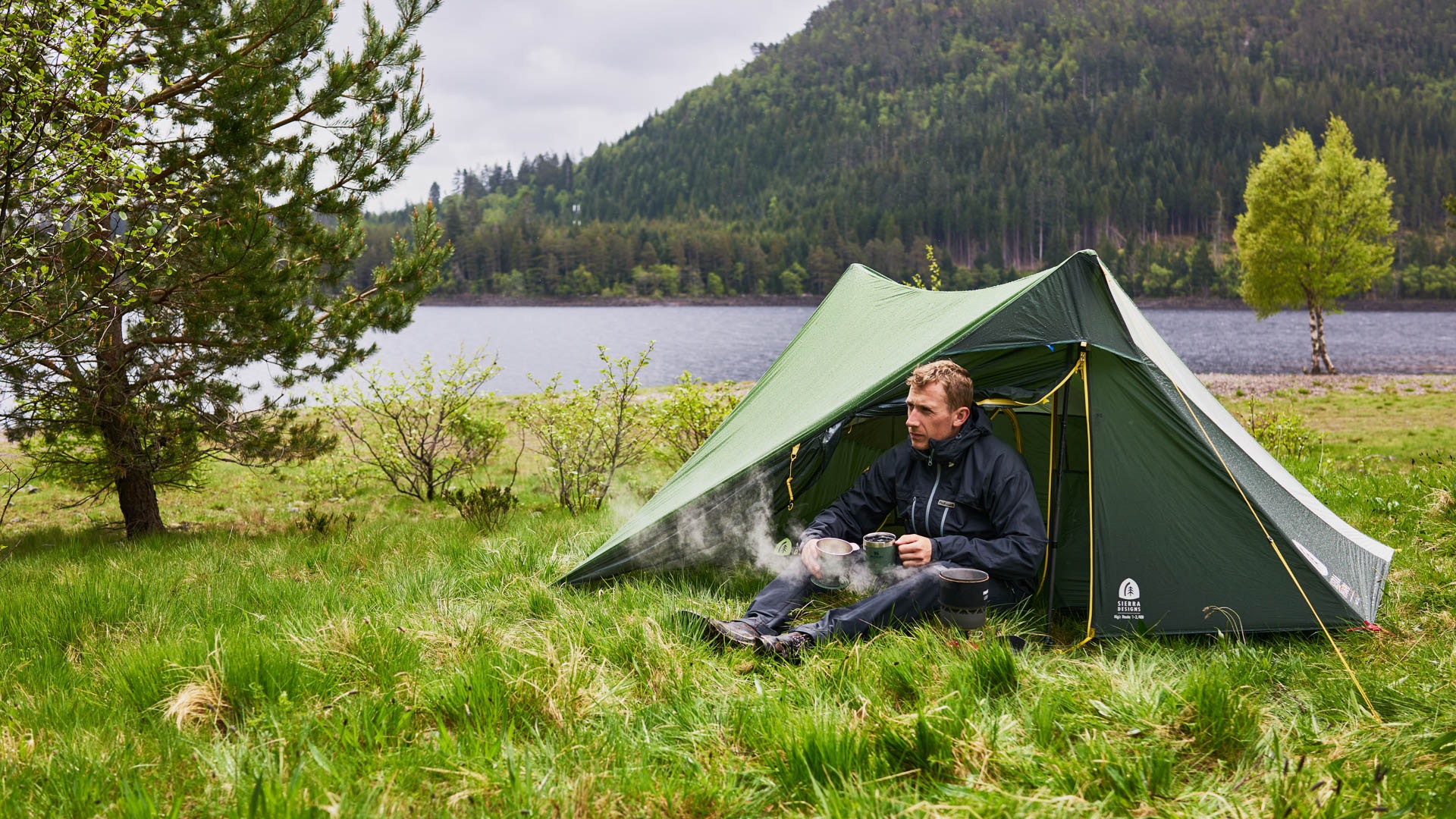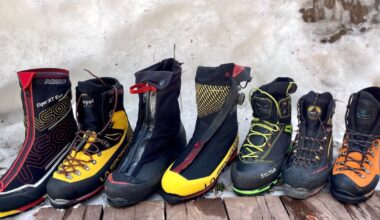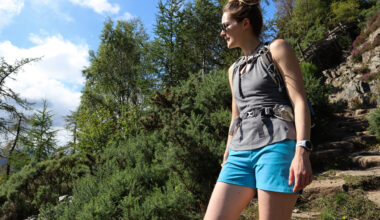When you’re setting out on a solo hiking or backpacking adventure, your tent becomes more than just shelter—it becomes your haven. Choosing the best 1 person backpacking tent ensures comfort, security, and efficiency in the backcountry. This guide is tailored for serious and recreational hikers alike who want the most dependable options in 2025. We’ve curated the top choices that balance weight, space, durability, and price—so you don’t have to.
What to Look for in a 1 Person Backpacking Tent
1. Weight & Packability
When every ounce matters, your tent must be as light as possible. Aim for under 3 pounds for general backpacking, and under 2 pounds for ultralight setups.
2. Season Rating
Most hikers need a 3-season tent (spring, summer, fall). A 4-season tent is heavier and best for snowy or alpine conditions.
3. Materials & Durability
Look for durable, waterproof fabrics like:
- Dyneema Composite Fabric (DCF): Ultra-light, waterproof, high-end
- Silnylon/Silpoly: Affordable, decent waterproofing, abrasion-resistant
4. Freestanding vs. Non-Freestanding
- Freestanding: Easy to pitch, stable without stakes
- Non-freestanding: Lighter, requires trekking poles and stakes
5. Interior Space & Vestibule
Check for floor dimensions, peak height, and vestibule coverage for storing your gear.
6. Ventilation & Condensation Control
Mesh panels, fly vents, and dual doors all help reduce internal condensation.
7. Price vs. Value
Top-end tents can cost $500+, but mid-range options ($200–$400) offer excellent performance too.
Top 12 Best 1 Person Backpacking Tents in 2025 (Reviewed)
1. Zpacks Plex Solo
The Zpacks Plex Solo is the epitome of cutting-edge ultralight shelter. Constructed with premium Dyneema Composite Fabric, it resists moisture and abrasion with ease. Despite its featherweight build of just 13.9 oz, it offers a roomy interior and a generous vestibule space for gear storage. The single trekking pole setup allows for an efficient, minimalist pitch, making it a perfect companion for thru-hikers and long-distance adventurers who need dependable shelter that packs down to nearly nothing.
Key Features:
- Weight: 13.9 oz
- Material: Dyneema Composite Fabric
- Type: Non-freestanding
- Price: ~$599
- Best For: Ultralight thru-hikers, long-distance trekkers
Pros:
- Extremely lightweight
- Excellent weather protection
- Durable and waterproof
Cons:
- High price
- Requires trekking pole for setup
2. Big Agnes Tiger Wall UL1
A well-rounded semi-freestanding tent, the Tiger Wall UL1 is praised for striking a fine balance between comfort and weight. It uses a hubbed pole system to deliver vertical walls and decent livable space. The silicone-treated ripstop nylon fly offers dependable waterproofing, and the dual zipper doors and vestibule give added practicality for gear and entry. With easy setup and solid durability, it’s a solid pick for solo backpackers.
Key Features:
- Weight: 2 lb 2 oz
- Material: Silicone-treated ripstop nylon
- Type: Semi-freestanding
- Price: ~$399
- Best For: Lightweight backpackers, weekend hikers
Pros:
- Good headroom
- Easy to set up
- Durable floor material
Cons:
- Vestibule is small
- Less wind resistance than fully freestanding tents
3. MSR Hubba Hubba NX Solo
Built for all-season reliability, the MSR Hubba Hubba NX Solo combines performance and comfort. It features a symmetrical pole structure that enhances headroom and vestibule space. Its ripstop nylon construction with Durashield coating ensures long-lasting weather protection. The tent also boasts superior ventilation and intuitive setup, ideal for hikers braving unpredictable conditions.
Key Features:
- Weight: 2 lb 7 oz
- Material: Ripstop Nylon
- Type: Freestanding
- Price: ~$429
- Best For: 3-season hikers, rugged conditions
Pros:
- Freestanding
- Spacious interior
- Excellent ventilation
Cons:
- Heavier than others on this list
- Pricey for the weight
4. Tarptent Notch Li
Engineered for serious ultralight performance, the Notch Li utilizes Dyneema Composite Fabric and two trekking poles for superior stability and weatherproofing. Its dual vestibules and doors enhance versatility, and the inner mesh keeps bugs and condensation at bay. It’s built to endure tough alpine conditions without adding weight to your pack.
Key Features:
- Weight: 20 oz
- Material: Dyneema Composite Fabric
- Type: Non-freestanding
- Price: ~$589
- Best For: Ultralight trekkers in unpredictable climates
Pros:
- Tough and ultralight
- Great in wind and rain
- Dual vestibules
Cons:
- Pricey
- Requires trekking poles
5. NEMO Hornet Elite OSMO 1P
For those who demand both sustainability and innovation, the NEMO Hornet Elite OSMO is a standout. It uses OSMO—a 100% recycled fabric with less stretch and better water repellency. Clever volumizing guy-outs, a minimal yet cozy interior, and a lightweight semi-freestanding design make it one of the most thoughtful designs in the ultralight market.
Key Features:
- Weight: 1 lb 14 oz
- Material: OSMO recycled nylon-poly blend
- Type: Semi-freestanding
- Price: ~$529
- Best For: Eco-conscious ultralighters
Pros:
- Eco-friendly material
- Great headroom
- Small pack size
Cons:
- Tight fit for tall users
6. Durston X-Mid 1
Innovatively designed with simplicity in mind, the X-Mid 1 features a unique diagonal inner layout and dual doors for excellent airflow and storage. Its Silpoly fabric provides consistent tension when wet, and the tent pitches with two trekking poles, forming a rock-solid, stormproof pyramid.
Key Features:
- Weight: 28 oz
- Material: Silpoly
- Type: Non-freestanding
- Price: ~$280
- Best For: Budget ultralight users
Pros:
- Spacious interior
- Affordable for its weight
- Minimal condensation
Cons:
- Needs two trekking poles
7. Gossamer Gear The One
With a legacy of simplicity and performance, The One by Gossamer Gear remains a trusted choice for thousands of thru-hikers. Featuring a single-wall Silnylon design, quick setup, and well-thought-out ventilation, this tent excels in warm, dry conditions.
Key Features:
- Weight: 20.3 oz
- Material: Silnylon
- Type: Non-freestanding
- Price: ~$299
- Best For: Thru-hikers, minimalist adventurers
Pros:
- Lightweight and compact
- Quick setup
Cons:
- Slight learning curve to pitch
8. Six Moon Designs Lunar Solo
One of the best values in the ultralight world, the Lunar Solo features a center-pole hexagonal design for wind stability and interior comfort. It uses durable Silpoly, sheds rain efficiently, and includes a large vestibule for your pack or boots.
Key Features:
- Weight: 26 oz
- Material: Silpoly
- Type: Non-freestanding
- Price: ~$260
- Best For: Budget-conscious solo hikers
Pros:
- Affordable
- Large vestibule
Cons:
- Less weather-resistant than Dyneema models
9. REI Co-op Flash Air 1
Great for beginners, the REI Flash Air 1 has a hybrid design combining simplicity and functionality. With a Silnylon body and trekking pole assist, it balances cost, space, and usability. Backed by REI’s satisfaction guarantee, it’s a safe first tent.
Key Features:
- Weight: 1 lb 6 oz
- Material: Silnylon
- Type: Hybrid
- Price: ~$299
- Best For: New backpackers, weekend trips
Pros:
- Lightweight
- Easy pitch
Cons:
- Modest space
10. Hyperlite Unbound 1P
Engineered for those pushing limits, this high-end Dyneema tent is ideal for ultra-distance treks. It combines weatherproofing, ease of use, and nearly unmatched durability.
Key Features:
- Weight: 19.1 oz
- Material: Dyneema Composite Fabric
- Type: Non-freestanding
- Price: ~$599
- Best For: Hardcore backpackers
Pros:
- Ultra-durable
- Packs down tiny
Cons:
- Price
11. Naturehike VIK 1
This Amazon bestseller offers big value for its budget price. Fully seam-sealed, with an integrated footprint and aluminum poles, it’s a user-friendly entry-level tent.
Key Features:
- Weight: 2.4 lbs
- Material: 15D nylon with silicone coating
- Type: Freestanding
- Price: ~$169
- Best For: Beginners, budget hikers
Pros:
- Affordable
- Integrated footprint
Cons:
- Heavier than premium models
12. Paria Outdoor Products Bryce 1P
Offering complete value with included stakes, guylines, footprint, and stuff sack, this tent is one of the most accessible options for those just getting started.
Key Features:
- Weight: 2.5 lbs
- Material: 20D Silnylon
- Type: Freestanding
- Price: ~$180
- Best For: Entry-level backpackers
Pros:
- Great price-to-value
- All accessories included
Cons:
- Bulkier packed size
Comparison Table
| Tent | Weight | Material | Price | Type | Best For |
|---|---|---|---|---|---|
| Zpacks Plex Solo | 13.9 oz | Dyneema | $599 | Non-freestanding | Ultralight Thru-hiking |
| Big Agnes Tiger Wall UL1 | 2 lb 2 oz | Silnylon | $399 | Semi-freestanding | Lightweight Backpackers |
| MSR Hubba Hubba NX | 2 lb 7 oz | Nylon | $429 | Freestanding | All-round durability |
| Tarptent Notch Li | 20 oz | Dyneema | $589 | Non-freestanding | Weather protection |
| NEMO Hornet Elite OSMO | 1 lb 14 oz | OSMO | $529 | Semi-freestanding | Eco-conscious hikers |
| Durston X-Mid 1 | 28 oz | Silpoly | $280 | Non-freestanding | Budget ultralighters |
| Gossamer Gear The One | 20.3 oz | Silnylon | $299 | Non-freestanding | Minimalist hikers |
| Lunar Solo | 26 oz | Silpoly | $260 | Non-freestanding | Value seekers |
| REI Flash Air 1 | 1 lb 6 oz | Silnylon | $299 | Hybrid | Weekend trips |
| Hyperlite Unbound 1P | 19.1 oz | Dyneema | $599 | Non-freestanding | Hardcore backpackers |
| Naturehike VIK 1 | 2.4 lb | Nylon | $169 | Freestanding | Beginners |
| Paria Bryce 1P | 2.5 lb | Silnylon | $180 | Freestanding | Entry-level users |
Best Budget Picks (Under $250)
- Naturehike VIK 1
- Paria Bryce 1P
- Six Moon Designs Lunar Solo
Best Ultralight Picks (Under 2 lbs)
- Zpacks Plex Solo
- Gossamer Gear The One
- NEMO Hornet Elite OSMO
Freestanding vs. Non-Freestanding: Which One Should You Choose?
- Freestanding: Easier to set up, best for rocky terrain
- Non-Freestanding: Lighter, more compact, better for grassy/meadow terrain
How to Choose the Right Tent for Your Adventure
- Are you thru-hiking? Go ultralight (Zpacks, Gossamer Gear)
- Casual weekend hikes? Go semi-freestanding (Big Agnes, REI)
- Want to save money? Go budget (Naturehike, Paria)
Tent Care & Maintenance Tips
- Dry before storage
- Avoid folding along the same lines
- Use a footprint to extend lifespan
- Reapply DWR coating every 12-18 months
FAQs About 1 Person Backpacking Tents
Q1: Can I fit my backpack inside a 1P tent?
Yes, most have vestibules. Some larger tents even allow gear inside the tent.
Q2: Do I need a footprint for a 1P tent?
Not mandatory, but recommended for protection and longevity.
Q3: Are ultralight tents durable enough for rain and wind?
Yes, especially Dyneema and Silpoly models with solid guy-outs.
Q4: Can a tall person fit in a 1P tent?
Check the floor length. Some tents like The One or MSR offer extended length.
Q5: What’s the best tent for under $200?
Naturehike VIK 1 or Paria Bryce 1P are strong choices.
Final Thoughts
Choosing the best 1 person backpacking tent means balancing weight, comfort, and cost based on your specific hiking style. Whether you’re an ultralight enthusiast or a casual weekend hiker, there’s a perfect tent here for you. Happy trails!
Explore more gear reviews and hiking tips at Trekking Search



